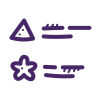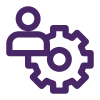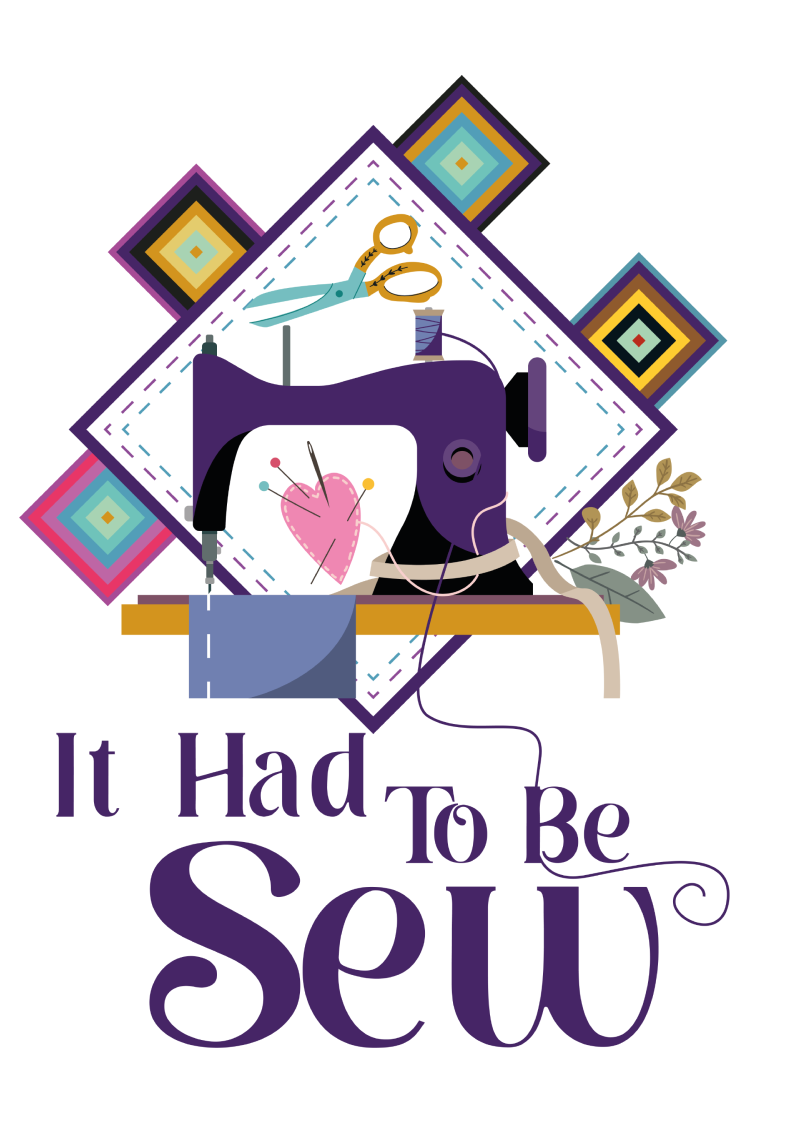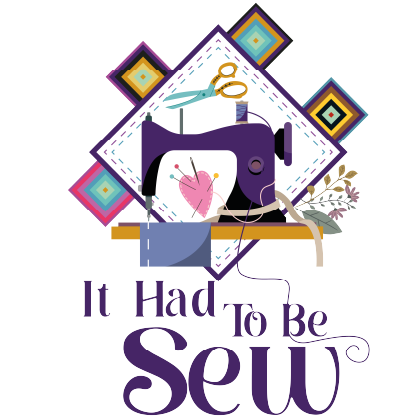FAQ
What is long arm quilting?
Longarm quilting is a method of sewing a quilt together using a longarm sewing machine. The machine moves back and forth on a rail system while the quilt remains stationary, allowing for the creation of a variety of stitched designs.
What is a memory quilt?
A memory quilt is a quilt or blanket made from personal items to commemorate a loved one, an important event, or a family history. Memory quilts can be created in many ways, from free-form piecing to a precise pattern. They can also include signatures, messages, and pictures to make them unique.
The goal of a memory quilt is to preserve memories and celebrate the life of a loved one or an important event. For example, a memory quilt made from a loved one's clothes can provide comfort to those who are grieving. A memory quilt made from baby clothes can be a fun way to remember cute baby outfits.
What is commissioned quilting?
Commissioned quilting is the process of having a quilt made to order for a specific person or purpose. The quilt can be a heirloom piece that reflects the individual's life, a moment in time, or the needs of a particular room.The quilt can be made with a traditional or modern pattern, and the color palette can be customized to reflect the client's style, home decor, or personality.
The size of the quilt can range from a pillow, to a wall hanging and up to a king-sized bed quilt.
The time it takes to make a commissioned quilt can range from three weeks to six months, depending on the size and complexity.
The cost of a commissioned quilt depends on the size, complexity of the design, and the cost of the fabrics.
How do I ship my quilt top to you if I am not local?
Here are some tips for shipping a quilt top to be quilted:
Protect the quilt. Put the quilt in a clear plastic bag to protect it from moisture.
Use a strong, new box that won't be crushed or broken open. You can also use a long box or a long skinny box from FedEx. Label the quilt including your name, address, and return shipping instructions on a page safety pinned to the quilt.
Use a tracking label. Use a shipping label with a tracking number and write it down before sending.
Secure the box by taping every flap and seam, and secure any edges that could get caught in machinery. Don't use string, rope, or masking tape.
You can choose to get insurance for your quilt.
How do I prepare my quilt for longarm quilting?
When preparing a quilt to send to a longarm quilter, these steps are crucial to ensure the quilting process goes smoothly:
Separate the Layers: Send the quilt top, backing, and batting (if not provided by the quilter) separately. Do not attach or pin these layers together. The quilter will assemble the layers on the machine.
If you're sending batting, leave it in its package.
Inspect and Prepare the Quilt Top:
Check for stains: Inspect the quilt top carefully and notify the quilter if you spot any stains.
Loose threads: Trim any loose threads. These can get caught during quilting, making them harder to remove later.
Press the seams: Make sure seams are pressed flat to prevent them from rolling or creating bulk during quilting.
Check the Quilt Edges:
Straight edges: Ensure the edges of your quilt top are straight. This is important for loading the quilt onto the longarm machine.
Trim edges if needed: Especially if you improv-pieced your quilt, trim any jagged edges to create a straight line along all four sides. While square edges are ideal, straight edges are typically sufficient.
Backing Size:
Larger backing: The backing fabric should be 8-10 inches larger than the quilt top in both width and height. For example, if your quilt top is 60" x 60", your backing should be at least 68" x 68". This extra fabric gives the machine the space it needs to secure the quilt during the quilting process.
By following these steps, you'll make it easier for the longarm quilter to work on your project and ensure a better final result!
Can I request a custom label?
You can request a quote for a custom machine embroidered label when arranging to send your quilt to us for completion.
Can I have a quilt hanging sleeve added to my quilt?
Yes, you can request a hanging sleeve be added to your quilt by our staff. You can either provide the hanging sleeve ready to attach, provide fabric to have one made by our staff, or have our staff create a sleeve out of muslin.
How long does it take to complete the work on my quilt?
Generally, most quilts are completed and ready for return shipping within two weeks of receipt. Return shipping time is not calculated in this period. An estimated completion date will be sent to you when your quilt is received for processing.
What if I need my quilt completed on a rush basis?
If you need to have your quilt completed faster than our normal processing time allows we may be able to accommodate you. This will have to be determined and agreed upon before you ship your quilt to us. There will be an additional surcharge for the rush service. When returning your quilt to you, we will typically use USPS Priority Post. If you require rush shipping, additional charges may apply and this service must be requested at the time of your quote.
I have a partially completed quilt top, can you finish making the top and then quilt it?
We have worked with many customers to complete quilt projects either started by a relative who was unable to finish or purchased/received in a partially completed state. Please reach out to us via our contact form with details of your needs so we can work with you to determine the best approach to completing the project.
How big should my backing be?
The backing fabric should be 8-10 inches larger than the quilt top in both width and height. For example, if your quilt top is 60" x 60", your backing should be at least 68" x 68". This extra fabric gives the machine the space it needs to secure the quilt during the quilting process.
How much binding do I need?
Binding length should be the perimeter of your quilt (total measurement of all four sides) plus approximately 20 inches for joining ends. If you like, we can calculate the amount of fabric needed and the number of strips to be cut for you. Reach out on our contact page.
Can you piece my backing fabric?
Yes, we can piece fabric to create your backing. If you are not using a wideback (generally 108” wide) fabric, your backing will likely need to be pieced from standard quilting fabric which is 45” wide. For longarm quilting, it is better to have your pieced seams run horizontally across the back of the quilt. We charge $10 per seam to join fabric to create your quilt backing.
What should I know before piecing my backing fabric?
When piecing your quilt backing, it's important to follow a few essential guidelines to ensure the process goes smoothly for both you and your longarm quilter.
Instead of using a typical ¼" seam like you would for your quilt top, opt for a wider seam—about ¾" to 1". This provides added strength and stability for the larger backing fabric. Use a shorter than normal stitch length to piece your backing to allow you to press the seams open. This reduces bulk and helps the quilt to lay flat, making the quilting process smoother. Whenever possible, use horizontal seams when piecing the backing. Horizontal seams allow the longarm quilter to load the backing more easily and help ensure the quilt stays square.
If you're creating a scrappy back with multiple fabric pieces, it's a good idea to keep all the seams horizontal for the same reason. This helps avoid issues when the quilt is loaded on the machine. Be aware that directional patterns on the backing might limit some all-over quilting designs if the quilter has to load the quilt sideways. This consideration mostly applies to all-over designs, whereas custom quilting tends to be more flexible.
Finally, after piecing the backing, give it a thorough pressing. A well-pressed backing reduces wrinkles and ensures a smooth and even result during the quilting process. Taking these steps will make the quilting process much easier and lead to a more polished finish.
Will you provide a cost estimate before I send my quilt?
Yes, after reaching out to us via our contact form, our staff with contact you for additional information and to discuss completion of your quilting project. This process involves the creation of an estimate prior to you sending your quilt to us.
What is the process from start to finish?
After reaching out to It Had To Be Sew via our contact form, our staff will contact you for additional details and to provide an estimate of project costs. If you choose to proceed, shipping instructions will be provided and you will make payment of your deposit. When your quilt is received by us, we will confirm receipt with you and provide you with an estimated completion time. When quilting is completed, a final invoice will be sent to you. As soon as payment is made, return shipping is processed as previously agreed upon.
How will I pick my edge to edge quilting design?
We have more than 1,000 edge to edge quilting designs available for use. During our conversation regarding your project we will suggest several options for quilting your project including both the quilting design and thread choices.
Will you do more customized quilting if requested?
While the majority of our longarm quilting work is edge-to-edge designs, we are able to offer some minor customization. As an example we can program our machine to not quilt over applique designs etc. There may be an additional charge for this customization based upon the time required to do it.
What method of payment do you accept?
We currently accept payment via PayPal and Venmo.
Do you require a deposit?
Yes, we require a deposit to be paid when you send you quilt to us for quilting. The amount of the deposit is generally 50% of the expected total cost. This deposit payment will be reflected on your final invoice.
Why Trust It Had to Be Sew for Your Quilting Needs?

Unmatched Craftsmanship
Our artisans are masters of their craft, dedicating their skills to create quilts that exceed expectations.

Attention to Detail
We believe in perfection. Every stitch, every pattern, and every embroidery is executed with utmost precision, ensuring a flawless quilt.

Passion for Personalization
Your quilt should reflect your story. We infuse passion into personalization, ensuring that your quilt is as unique as you are.

Exceptional Customer Service
Your satisfaction is our priority. Our friendly and knowledgeable customer support team is always ready to assist you, providing a seamless experience from start to finish.

Stay connected with us on social media for the latest updates, product announcements, and expert insights.
Follow along to be informed and inspired.
Join the It Had To Be Sew Community!
Stay in the loop! Sign up for our newsletter and be the first to hear about exclusive offers, new services, and expert tips. Don’t miss out—join our community today!
We will never sell your data.
